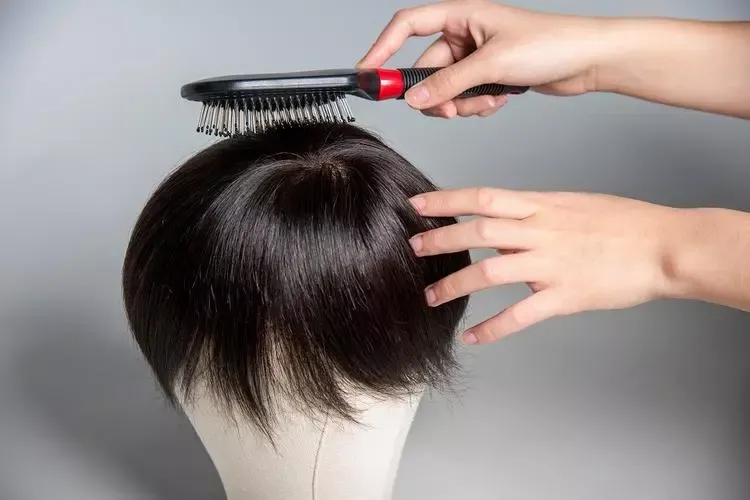Wigs have become an indispensable accessory for many individuals, whether for fashion, cosplay, or medical reasons. Keeping your wig clean is crucial not only for its longevity but also for maintaining its appearance and hygiene. Proper washing techniques can make a significant difference in how your wig looks and feels. In this comprehensive guide, we will walk you through the step-by-step process of washing a wig to ensure it stays clean, fresh, and beautiful.
Understanding Wig Materials
Before delving into the washing process, it’s essential to understand the materials your wig is made of. Wigs can be crafted from synthetic fibers, human hair, or a blend of both. Each material requires different care methods to maintain its quality.
1. Synthetic Wigs: These wigs are made from artificial fibers such as acrylic, nylon, or polyester. They are more affordable and easier to maintain than human hair wigs. However, synthetic wigs are sensitive to heat and certain styling products.
2. Human Hair Wigs: Made from real human hair, these wigs offer the most natural look and feel. They can be styled and treated like natural hair, but they require more care and maintenance compared to synthetic wigs.
3. Blended Wigs: These wigs combine synthetic fibers with human hair, offering a balance between affordability and natural appearance. Care instructions may vary depending on the blend ratio.
Materials Needed
Before you begin washing your wig, gather the following materials:
1. Wig brush or wide-tooth comb
2. Mild shampoo
3. Conditioner (specifically formulated for wigs)
4. Wig stand or mannequin head
5. Towel
6. Wig cap (optional)
7. Wig conditioner spray (optional)
8. Wig detangling spray (for synthetic wigs)
Step-by-Step Washing Process
Follow these steps to wash your wig effectively:
Step 1: Detangle the Wig
Start by gently brushing or combing through the wig to remove any tangles or knots. For synthetic wigs, use a wig detangling spray to help loosen knots without causing damage to the fibers.
Step 2: Prepare the Washing Solution
Fill a basin or sink with lukewarm water. Avoid using hot water, as it can damage synthetic fibers and cause human hair wigs to lose moisture. Add a small amount of mild shampoo to the water and mix until it creates a soapy solution.
Step 3: Wash the Wig
Place the wig in the basin of water and gently swish it around, ensuring that the entire wig is submerged. Use your fingers to massage the shampoo into the wig, paying extra attention to areas where dirt, oil, or product buildup may be present. Avoid rubbing or wringing the wig, as this can cause tangling and damage.
Step 4: Rinse Thoroughly
Once the wig has been shampooed, carefully rinse it under lukewarm running water until all the soap residue is removed. Gently squeeze the excess water out of the wig, being careful not to twist or wring it.
Step 5: Condition the Wig
Apply a small amount of wig conditioner to the palm of your hand and distribute it evenly throughout the wig, focusing on the mid-lengths and ends. For synthetic wigs, use a conditioner specifically formulated for synthetic fibers. Allow the conditioner to sit for a few minutes to penetrate the hair shafts.
Step 6: Rinse Again
After conditioning, rinse the wig thoroughly under lukewarm water to remove any excess conditioner. Make sure all the product is washed out to prevent buildup, which can weigh down the wig and affect its appearance.
Step 7: Towel Dry
Gently blot the wig with a towel to remove excess water. Avoid rubbing or squeezing the wig, as this can cause damage or frizzing, especially for synthetic wigs. For human hair wigs, you can also gently comb through the hair with a wide-tooth comb to remove any remaining tangles.
Step 8: Air Dry
Place the wig on a wig stand or mannequin head to air dry naturally. Avoid using heat styling tools or exposing the wig to direct sunlight, as this can damage the fibers or cause color fading. Allow the wig to dry completely before styling or storing it.
Additional Tips for Wig Care
1. Avoid Heat: Synthetic wigs are not heat resistant and can be damaged by high temperatures. Human hair wigs can withstand heat to some extent but should still be treated with care to prevent damage.
2. Store Properly: When not in use, store your wig on a wig stand or mannequin head to help maintain its shape and prevent tangling. Avoid storing the wig in a cramped space or in direct sunlight, as this can cause damage over time.
3. Avoid Friction: Minimize friction on the wig by wearing a wig cap underneath, especially if you have natural hair. This will help protect both your hair and the wig from rubbing against each other, reducing tangling and friction.
4. Regular Maintenance: Brush or comb your wig regularly to prevent tangling and maintain its style. For synthetic wigs, use a wig-specific brush or comb to avoid damaging the fibers.
Conclusion
Properly washing your wig is essential for preserving its quality and ensuring it looks its best for as long as possible. By following the steps outlined in this guide and taking care to use the appropriate products and techniques for your wig type, you can keep your wig clean, fresh, and beautiful for many wears to come. Remember to handle your wig gently, avoid harsh chemicals and heat, and store it properly when not in use to maintain its longevity and appearance. With the right care and attention, your wig can continue to be a versatile and stylish accessory for any occasion.


